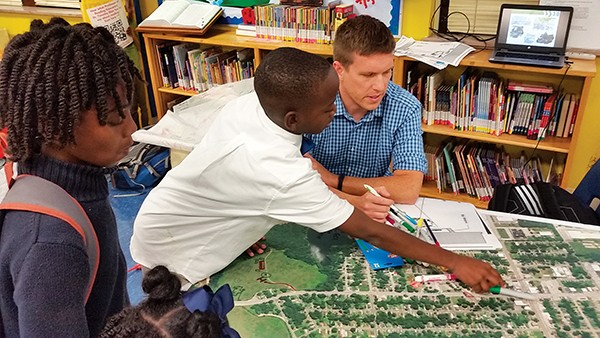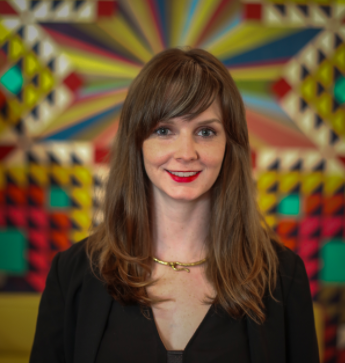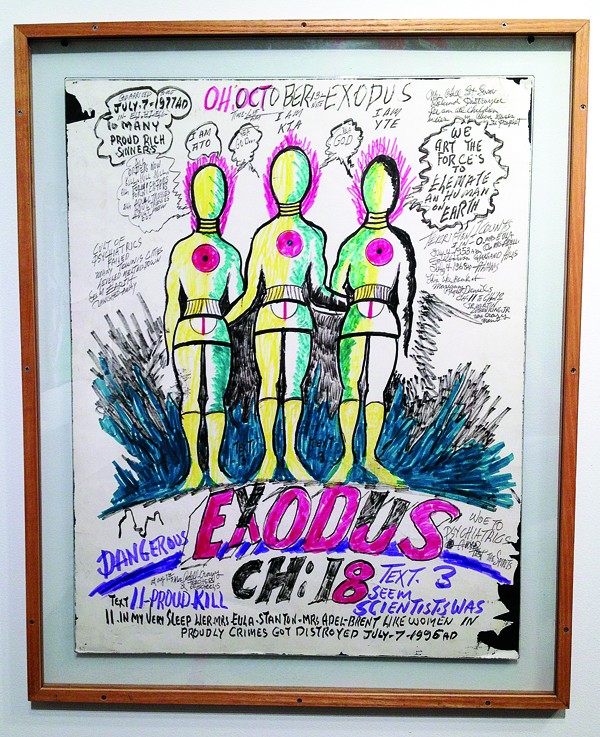“Is this just another study?!”
The question brought a hush to the proceedings. Everyone realized that the woman asking it had cut to the quick of the matter. I was attending one of the public outreach sessions sponsored by Memphis 3.0, a new initiative to develop a comprehensive plan for the city’s third century, which begins in 2019. Such public meetings tend to attract the same few citizens who have the mindset and the time to get involved, and this woman was clearly a veteran of many such gatherings. Her question immediately conjured up the ghosts of past bureaucrats and academics, however well intentioned, that raised hopes for change, only to offer more business as usual after the data was collected.
But Ashley Cash, a veteran of neighborhood planning herself, and head administrator at the city’s Office of Comprehensive Planning (OCP), was confident and quick with her response: “Whatever is written in this plan gets transferred to the policy and code of the city.” This was, she insisted, going to be a plan with follow-through.
And it was perhaps the first time that one could honestly say this about such a document.
While municipal planning is nothing new, it has only evolved in fits and starts in Memphis. A comprehensive plan like Memphis 3.0 aims to coordinate various project-specific plans with a holistic vision of how to best grow the entire city. If our growth and wealth tend to concentrate around a “cone” expanding from downtown to the east along Poplar, how do we spread it out? How do we encourage businesses in underdeveloped neighborhoods. How do we improve transit to serve them better? How can we make all neighborhoods more livable and more sustainable?
 Justin Fox Burks
Justin Fox Burks
Meet the architects of Memphis 3.0: (from l to r) Lauren Kennedy, John Paul Shaffer, and Ashley Cash are pooling city resources to design a plan for a better Memphis.
John Paul Shaffer, executive director of BLDG Memphis (a nonprofit that facilitates community development corporations and projects), says, “You can look at our peer cities and model cities, and there’s not a single one of them that doesn’t have some sort of guiding document for how they’re doing business. And how they’re making development decisions.”
The only such plan Memphis has is nearly 40 years old.
Community input has become de rigueur for such plans. “Of course, public meetings are the tried and true method to reach people,” says Cash. “But we’ve also tried to partner with a lot of agencies who have existing networks.” That includes the two chief nonprofit partners in the Memphis 3.0 initiative: BLDG Memphis and the UrbanArt Commission.
If that third partner strikes you as unconventional, you’re correct. Only a few cities have pioneered the tactic of having planners work with artists. (In fact — full disclosure — that’s how I came to be involved with Memphis 3.0, as a consulting musician.) But that’s not all that’s innovative about the project. The biggest leap forward has been to simply take the idea of a comprehensive plan seriously, initiating community involvement across the vast area that Memphis has become, from Presidents Island to Cordova.
Shaffer sums up the city’s history this way: “The city has grown by this cycle of flight and annexation. And that goes all the way back to people getting out of downtown to the streetcar suburbs, and then it continued through the civil rights era, through white flight, and bussing and all these kinds of things that played into it. And it’s all been facilitated by government policy — how government spent money on programs that were accessible mainly to middle-class white families. Then they built highways and all these things that spurred this development and encouraged it. Memphis ate it up to some extent, and that’s how we grew in the entire 20th century.”
Coping with the sheer sprawl of Memphis is the key challenge to planners. City limits that encompassed only 51 square miles in 1945 have grown more than six-fold today. In the 1960s, plenty of federal money was available to subsidize municipal planning departments, but soon after they had to function independently, at the mercy of the economy. This wasn’t always a bad thing, given that one of the major planning goals of the 1970s was to demolish Beale Street. That initiative foundered, but by the late 1970s, there were still enough resources to begin work on the city’s most recent comprehensive plan — completed in 1981 and updated the year after.

“Bringing artists into the equation” helps keep Memphis 3.0 planners thinking outside the box: Yancy Villa-Calvo, the artist behind GEMS (short for Go Explore Memphis Soul), works with Memphis youth to design a stylized map of the city.
The city’s commitment to this plan was rarely resolute, possibly because widespread public input was not a priority. And without citizen involvement, there was no accountability. “If you look at our last comprehensive plan,” says Cash, “there really wasn’t a lot of community engagement in that. That’s just the way the profession was at the time.”
As Shaffer sees it, “It’s not like community engagement didn’t exist back then. I just don’t know that locally it was highly valued the way this project values it. I’m sure there were probably constituent groups that were at the table, and maybe that’s because they’d always been at the table.” What makes Memphis 3.0 different, he says, is “thinking about new approaches and bringing artists into the equation and doing pop-up meetings and bus tours. Even serving meals at community meetings is new. Some of these new approaches are exciting to see at the local level. These approaches have been around for a while; it’s just nice to see them come home.”
“Bringing artists into the equation” is the ideal way to express the process by which aesthetics are brought to bear on a discipline that has traditionally been the realm of number-crunchers. And it brings us to the third primary player in Memphis 3.0, the UrbanArt Commission (UAC). Executive director Lauren Kennedy recalls the evolution of her thinking: “Several years ago, the UAC budgeted for a public art master plan. When I came on board, I didn’t know exactly what to do with that money, because at that point — this was 2015 — there wasn’t really a planning department. There wasn’t some comprehensive city plan to tie it to, and I didn’t want to produce a public art master plan that just lived in a vacuum. So I didn’t move on it that year. Then we got a new mayor, a new administration. Jim Strickland came in and basically rebuilt the Planning Department and the Office of Comprehensive Planning. Also, when I was thinking about how to use that funding, I was starting to follow work in Calgary and Minneapolis, where artists and designers had been plugged into city departments to think about things differently, to come at things from a different approach and perspective, and to consider some of the aesthetics of the way the cities were operating.”
The work in Minneapolis’ Creative CityMaking program that inspired Kennedy ranged from street theater to a “rolling foot cam” video project that recorded pavement-level images. The public interest in such projects was so impressive that Kennedy and John Zeanah (who had recently helmed the Mid-South Regional Greenprint and Sustainability Plan) made a trip to Minneapolis to see it firsthand. What they saw was enough to convince them that artists could take public engagement to a new level. At the same time, Zeanah’s Greenprint project was making a new comprehensive plan for the city seem doable.
“I feel like that was kind of a turning point,” says Shaffer. While his BLDG Memphis had been calling for a comprehensive plan for years, “the Greenprint showed a lot of people who had never seen that comprehensive approach or hadn’t seen it in three decades, and kinda put that back on the table for folks. Where we’re looking at this through the lens of green spaces, but we’re looking at housing, transportation, and workforce and education and health and equity and these kinds of things that make a comprehensive view.”

Roger Eckstrom works with local students at Promise Academy to practice making a plan for the city.
Thus, with some additional encouragement from Paul Young, director of the city’s Division of Housing and Community Development, a perfect storm of influences led to the founding of Memphis 3.0. And in an innovative move, the UAC was at the heart of the operation.
“I’m grateful to the city for being open to this experience and the journey with us,” Kennedy says. She wasted no time in putting out a call for artists. Out of more than 50 applicants in March of last year, three were selected, and bless my soul if I wasn’t one of them. And while we artists are just beginning our engagement events, we’ve worked out some interesting ways to re-imagine our city in creative ways. I am in very good company. Yancy Villa-Calvo, a native of Mexico City, has done public art installations for some time, the most recent being her “Barrier Free” project, which used a movable wall and mirrored silhouettes of families to urge participants to empathize with the immigrant experience. For Memphis 3.0, she has devised an installation called GEMS (Go Explore Memphis Soul). She’ll be visiting neighborhoods with the GEMS mobile, a crystalline-like art piece superimposed on a map of the city, using eye-catching images that encourage people to draw or write what they love, dislike, and hope for in their neighborhood.
Neili Jones, a Raleigh/Frayser native, has studied design, fashion, and brand management, but her real interest is stories. “My goal is to ensure that as many voices get involved as possible,” says Jones. “I meet the people where they are — community meetings, rallies, groceries stores, or at bus stops. My art is about utilizing space and collecting the visual story.” Having most recently done activist art in Atlanta, her work for Memphis 3.0 uses creative set pieces to elicit narratives from residents concerning the history and development (or lack thereof) of their neighborhoods.
As for me, a native of Memphis, Nebraska, my public art (aside from performing in rock or jazz bands) has always centered on sound design for independent movies, modern dance pieces, or gallery installations. My engagement project for Memphis 3.0 focuses on the environmental sounds that surround us. “ReMix Memphis” is a traveling audio experience, using field recordings of Memphis in a user-friendly app that allows participants to mix together the sounds they’d like to hear (or not hear) around them. A way of thinking aurally, not visually, it encourages people to re-imagine the livability of their community. The best part? I’m crowd-sourcing my field recordings. Use your phone to record things like trains, planes, automobiles, playgrounds, or what have you, then email them to remix.memphis@gmail.com.
As one of the artists for Memphis 3.0, I’ve had a front row seat to its implementation. A particularly inspiring moment came during a retreat by the entire team of Memphis planners and artists in St. Louis. One community organizer there, based in Chuck Berry’s old neighborhood, told us: “Every community has a heartbeat. Find it!” And we have followed that counsel. Divvying up the city into 14 districts, three planning teams, each one armed with an artist, are setting up local headquarters as the year unfolds.
The teams also benefit from a small army of expert planners, aside from the professionals already working for the OCP, including local design firms brg3s, Ray Brown, and Self+Tucker, the University of Memphis School of Urban Affairs and Public Policy, and the Berkeley, California-based firm Opticos. The latter have consulted with many cities, based on the key insight that “walkable places are critical for healthy, resilient, and equitable communities.” And, in a departure from old-school urban planning that would have sacrificed whole neighborhoods at the altar of progress, Opticos operates with a “focus on social, environmental, and economic responsibility — a triple bottom line.”
Noble goals indeed, but as I joined the first tour of neighborhoods in the North District (a sprawling administrative fiction stretching from Harbor Town to Hyde Park and Douglass), I wondered how we could bring such values to bear on what we saw. Ray Brown and local residents spoke about significant places on our route (and I spoke about significant musical sites, such as Manassas High School, what was once Johnny Curry’s Club, and the former American Sound Studios, now a Family Dollar). What struck me most was the tragedy of what North Memphis has endured at the hands of collapsed or departed industries. All that’s left of Firestone, one-time employer of thousands, are the ruins of a factory and the brownfields around it, too polluted for cost-effective remediation. Its looming smokestack made me wonder: Could any amount of planning remedy this history?
And yet the mood was upbeat as we tooled up and down Chelsea. When I spoke to community members who attended, they felt their concerns were falling on sympathetic ears, by and large. Quincey Morris, of the Klondike-Smokey City Community Development Corporation felt that the Memphis 3.0 workshops could have been scheduled better, so as to include seniors who don’t go out in the evenings, or single parents. “Other than that,” she said, “I think that they did listen, especially in my one-on-one interview with [OCP planner] Trey Wilburn. And as 3.0 moves forward, we do intend to stay involved and participate. We have an opportunity to have input and hold people accountable. And I think that’s the only way that you can do it.”
Indeed, as Cash notes, accountability is key: “We can continue the conversation. The process ends in 2019, on the tail end of 2018, but, really, what we wanna be able to say is, ‘Okay, it’s 2020, and we’re still engaged in the community.'” Shaffer adds, “If we adopt a plan that citizens and communities don’t feel like they have any ownership in, it’s not something that’s easily implementable. It’s an uphill battle. Bringing people in for the whole process and the whole ride, it helps get it adopted and makes sure that decision makers are following this guiding document, because it’s something the entire community has come together and said: ‘This is our vision for our city and for our neighborhoods.'”
Visit www.memphis3point0.com to learn more and see when workshops and artists’ events are scheduled near you.

 Justin Fox Burks
Justin Fox Burks 



